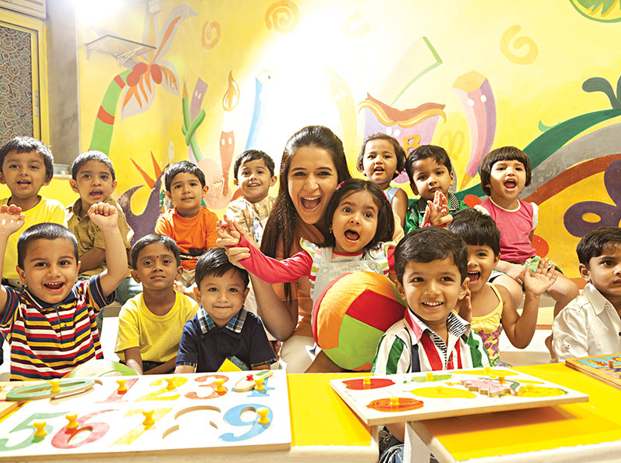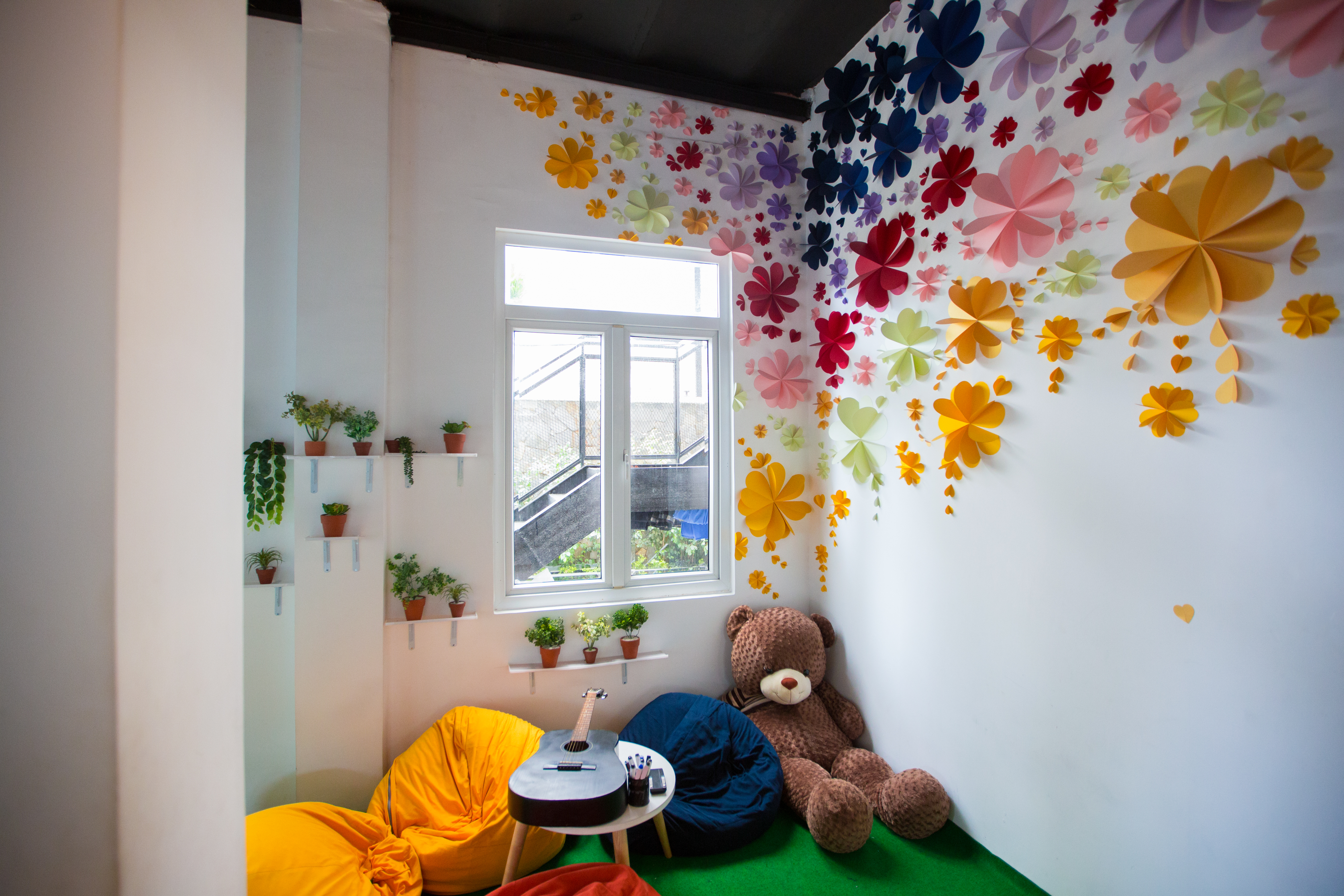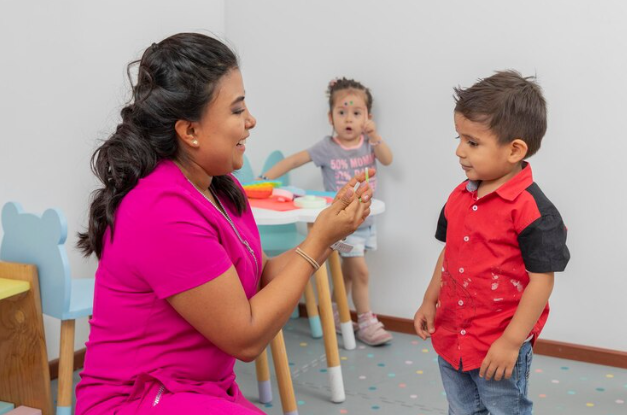Creating a Safe and Stimulating Learning Environment for Children: A Guide for Childcare Providers and Educators

In the realm of childcare providers and educators, constructing a learning environment that is secure while also being stimulating is not just a task – it's a responsibility. This responsibility extends to shaping a space that nurtures children's growth and fuels their thirst for exploration. This blog embarks on an exploration of crucial tips and strategies to attain this objective with finesse.
The Importance of a Nurturing Learning Environment
Before diving into the specifics of creating such an environment, let's delve into why it carries paramount importance:
Holistic Development:
Crafting a learning environment isn't just about the physical space; it's about fostering holistic development. This encompasses cognitive, emotional, social, and physical growth, intertwining to shape well-rounded individuals.
Early Learning Advantage:
Early childhood is a phase of immense receptiveness to learning and environmental cues. A well-constructed setting can harness this pivotal period for maximum impact.
Positive Lifelong Associations:
An environment designed with care doesn't just influence childhood; it lays the foundation for a lifelong positive association with learning, igniting a lifelong love for knowledge.
Safety First: Establishing a Secure Learning Space
Safety is the cornerstone when designing a childcare environment. Here are the strategies that solidify a safe learning haven:
Childproofing Mastery:
Infuse the space with childproofing measures such as outlet covers, safety gates, and furniture anchors. These small actions can prevent substantial accidents.
Materials that Matter:
The materials chosen for toys, furniture, and decorations must be meticulously selected. Opt for non-toxic and age-appropriate materials to eliminate health concerns.
- Line of Sight:
Establish clear zones where supervision can be maintained effectively. Visual oversight ensures that children are within reach while they explore their surroundings.
Stimulating Curiosity: Fostering an Enriching Atmosphere
A dynamic and engaging environment kindles curiosity and fuels the flames of learning. Employ these strategies for an enriching atmosphere:
Zonal Wisdom:
Learning centers dedicated to specific activities – reading nooks, art corners, and sensory zones – grant children the freedom to explore their interests.
Art of Interaction:
Interactive displays are windows into a world of exploration. These displays showcase children's projects, artwork, and intriguing educational information.
- Sensory Symphony:
Don't shy away from an array of textures, colors, and patterns. This sensory palette engages young minds in creative and cognitive ways.
Flexibility and Adaptability: Catering to Diverse Needs
Diversity is the heart of a classroom. Make room for these differences through adaptable designs:
Flexibility Woven In:
Furnishings and learning spaces that can be reconfigured at a moment's notice cater to varying group sizes and activities.
Quiet Corners:
Quiet spaces offer solace for individual activities like reading or introspection, ensuring every child's unique needs are met.
Inclusivity as Design:
A truly nurturing space is inclusive. Create an environment that's accessible to all children, regardless of physical ability, through thoughtful design and arrangement.
Nature-Inspired Learning: Bringing the Outdoors In

Bringing nature indoors nurtures both learning and well-being:
Greens Inside:
Indoor plants breathe life into the atmosphere while improving air quality. They provide a tangible connection to the natural world.
Nature's Touch:
Opt for materials like wood and textiles that echo nature's authenticity, enriching the ambiance with warmth and comfort.
- Wonders of the Wild:
Decor and artwork with nature-inspired themes stimulate curiosity about the world's diverse ecosystems.
Organized and Inviting Spaces: Enhancing Engagement
An organized space ignites engagement and fuels exploration:
Order in Chaos:
Clear storage solutions with transparent containers and labels make the hunt for toys and materials an exciting expedition.
Visible and Accessible:
Open shelving units proudly exhibit toys and materials, inviting children to interact with them actively.
Personal Space Pride:
Encourage a sense of belonging by allowing children to personalize their areas with self-made art, cherished photos, and personal creations.
The Power of Play: Integrating Playfulness into Learning
Play isn't just a diversion; it's a critical learning tool. Infuse playfulness into your environment:
Worlds of Make-Believe:
Role-play corners, be it a mini kitchen or an imaginary clinic, are arenas of imaginative play and social interaction.
Puzzles and Enigmas:
Interactive puzzles and games nourish critical thinking, problem-solving, and teamwork, all in the spirit of play.
- Physical Joy:
Soft play zones with cushions and mats promote physical activity, enhancing gross motor skills while keeping the element of fun alive.
Collaboration and Social Learning: Fostering Positive Relationships
A nurturing environment is a breeding ground for positive relationships and social learning:
Cluster Seating:
Arrange seating in clusters, facilitating peer interaction during discussions, group projects, and shared play.
United We Learn:
Collaborative projects inspire teamwork and the exchange of ideas, honing communication skills and cooperative spirit.
Harmony through Resolution:
Teach conflict resolution. Equip children with the tools to express themselves and navigate disagreements respectfully.
Calm and Comfort: Creating a Tranquil Retreat
Amidst the vivacity of learning, carve out oases of calm:
Reading Havens:
Comfy reading nooks with soft seating and ample light are sanctuaries that cultivate a love for reading.
Gentle Illumination:
Soft, warm lighting cultivates tranquility, creating an environment conducive to both relaxation and concentration.
Mindful Moments:
Establish corners for mindfulness exercises, adorned with visuals that soothe and elements that guide deep breathing.
Engaging with Families: Involving Parents and Caregivers
Collaboration with families amplifies the learning experience. Strengthen this partnership:
Transparent Communication:
Regularly communicate with parents, sharing progress updates, ongoing activities, and developmental milestones.
Family Fusion:
Organize workshops and events that immerse families in the learning journey, empowering them to extend educational support at home.
Knowledge to Go:
Propose take-home activities and projects, seamlessly connecting learning between the childcare space and home.
Conclusion: Crafting a Bright Future through Nurturing Spaces

In the grand tapestry of childcare, creating a safe and stimulating learning environment is both an art and a science. Weaving safety measures, curiosity-driven design, flexibility to diverse needs, and the power of play, childcare providers and educators wield the brush that paints the canvas of children's growth and exploration. It's a canvas that extends far beyond the present, setting the stage for a lifelong pursuit of knowledge and accomplishment.
As providers and educators, the mantle of influence rests upon your shoulders. Immerse yourself in these strategies, adapting them to your unique setting, and witness the metamorphosis of children as they flourish in a domain that celebrates their potential and nurtures their journey of development.




